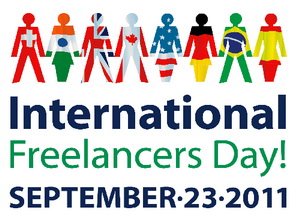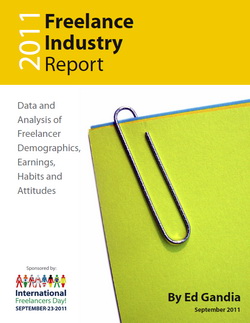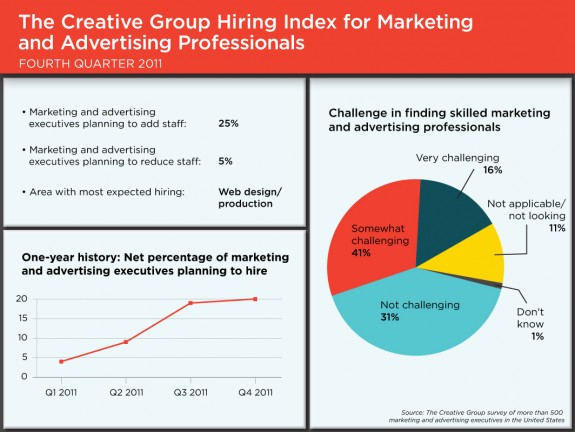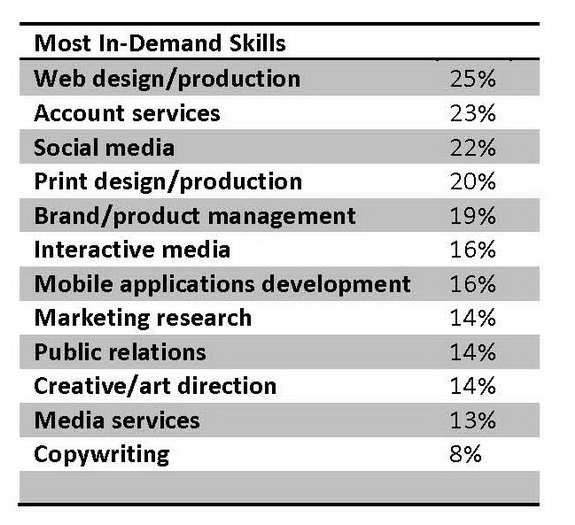 WRITERS. DESIGNERS. It doesn’t really matter whether you became a freelancer by choice or “accidentally” (through downsizing). To make the most of this career phase, treat your freelance business like a real business. That means having strategies for attracting clients, managing productivity, pricing your services, hiring and orienting employees, maintaining cash flow, marketing your services, closing the sale, serving your customers, and planning for growth.
WRITERS. DESIGNERS. It doesn’t really matter whether you became a freelancer by choice or “accidentally” (through downsizing). To make the most of this career phase, treat your freelance business like a real business. That means having strategies for attracting clients, managing productivity, pricing your services, hiring and orienting employees, maintaining cash flow, marketing your services, closing the sale, serving your customers, and planning for growth.
As a freelancer myself, I hadn’t really given these issues much thought until I attended the free conference celebrating International Freelancers Day on September 23.
Like other women, I have freelanced at different stages of my career—first, as a young mother balancing work and family and now as a “maturing” single woman/displaced magazine editor striving to finish my writing career more like I had originally envisioned. My freelance business plans have been complicated by how radically the world, publishing and communications technology, and the economy have changed since my first go-round with freelancing. (Back then, the “World Wide Web” had just been introduced and the Apple IIci computer was state-of-the-art in ad agencies).
So, I was happy to attend the International Freelancers Day Conference organized by Ed Gandia and his partners at The International Freelancers Academy. The content was so relevant and inspiring that I gladly spent $29 to buy the post-conference package of session transcripts, audio recordings, and video replays.
After reviewing the sessions, I was struck by how well-balanced the content was. The 20-minute online videos were presented by a stellar mix of book authors, entrepreneurs, design-firm owners, bloggers, motivational speakers, and financial experts. They highlighted the many different ways freelancers could attain greater financial success by being more entrepreneurial in their thinking. Below are just a few themes that caught my attention.
Make Marketing Less of a Chore
Let’s face it. Freelancers often let marketing lapse when we get busy. This is partly because we tend to feel uncomfortable hyping ourselves or closing the sale. Or, we fear getting flooded with more work than one person can reasonably handle. Many conference speakers emphasized that marketing doesn’t have to be painful, if you do it in a way that feels authentic.
Do work you are passionate about. “Passion is the fuel to creativity,” says Peleg Top, author of the soon-to-be-released book “Designing Abundance: A Creative Guide to High Growth.” Doing work you are passionate about will motivate you to do more work: “It will motivate you to grow your business and do the things that you need to do to grow your business.” When you can express your passion through your marketing, “you start attracting and winning the kind of clients” who will respect your passion.
Carve out a niche. “When you’re really good at what you do, or you have a niche that few others can claim, the marketing that you do will be more productive because repeat business and referrals will come naturally,” explained Peter Bowerman, author of “The Well-Fed Writer.” That means you will have to do less marketing on an ongoing basis. This is particularly true if you can carve out a niche where few others are operating. As Bowerman puts it, “The narrower niche, the less necessary it is to be the best writer in the business.”
Another advantage of having a niche, says Rebecca Matter of American Writers & Artists, Inc., is that you can work smarter and faster because you won’t face a brand-new learning curve with every project you undertake. Plus, you can build on the work and research that you’ve done for one project, and turn it into another project for another client.
Dedicate time every day to marketing yourself or building your business. It can be as simple as following up with a potential client, adding a new sample to your website, or writing a blog post, says Matter. “It can take you ten minutes, but try to get in the habit of doing one thing every day that will help build your business.”
Establish Financial Security
Several sessions provided tips for pricing your work and raising your rates as demand for your services grow. Others addressed the issue of financial security in more general terms.
Build on your strengths. “Competence is at the heart of freelance security,” stated Peter Bowerman. He pointed out that a well-established freelance practitioner who has a “diversified portfolio” of clients and multiple revenue streams can feel far more secure than a salaried employee these days.
Set up three online bank accounts for (1) tax money, (2) retirement savings, and (3) emergencies. Keep these three accounts separate from the standard bank account you maintain for everyday spending, said Denise Kiernan, co-author of “The Money Book for Freelancers, Part-Timers, and the Self-Employed.” She recommended having an ATM card only for your everyday spending account: “Try to throw up as many obstacles as possible between you and the money you’ve put away in savings.”
Join Forces with Other Freelancers
The conference highlighted online resources through which we can connect with other freelancers who can help us build “virtual teams” for different project assignments or workloads. As Sean Hedge of FreelanceSwitch puts it, “It may feel like freelancing is a solo mission, but there is a whole ecosystem we can tap into to grow our businesses, and there are clear advantages to doing so,”
Do not hire someone just like you. Hire someone with complementary skills, advises Mike McDerment, the entrepreneur who founded FreshBooks online invoicing service for solopreneurs. “Bring in people who are going to enable you to do more of what you are good at and comes easily to you.”
Streamline employee training. In his presentation on “How to Profitably Grow Beyond a Business of One,” Hedge suggested documenting guidelines and procedures so each new hire and project partner can get up to speed quickly. Then, you don’t have to spend a lot of time verbally repeating the same instructions to each new person you work with.
Take Risks
If your niche begins to feel boring and repetitive, don’t be afraid to take some risks.
Go after projects you think you’re unqualified for. “The most important projects you’ll ever do are the ones who get you noticed and make you feel fulfilled,” says Tyler Tervooren in his presentation “Smart Risk-Taking for Savvy Freelancers.” Although it’s natural to want to feel comfortable with the work you’re doing, Tervooren noted that “Comfort doesn’t propel a career, and it doesn’t prepare you for bigger and better things.” If you step out of your comfort zone, you’ll probably be highly motivated to get the job done right.
Say no to projects that won’t get you closer to your goals. “It’s hard to say no to guaranteed money, but it is absolutely essential to do so if you ever want to focus your business on something meaningful to you and get known for the type of work you actually want to do,” says Tervooren.
If you missed the 2011 International Freelancer’s Day Conference, you can visit the Facebook page for updates on next year’s event. Or, check out some of the same kinds of training videos that will be presented year-round through The International Freelance Academy.
Onlne Resources
International Creative Freelancers Day
(Sign up for e-mail new about the 2012 event)
The International Freelancers Academy
Advanced Riskology: Better Living Through Uncertainty
Books
The Well-Fed Writer by Peter Bowerman
The Wealthy Freelancer by Ed Gandia, Steve Slaunwhite, and Pete Savage
RELATED POST
Conference Celebrates International Freelancers Day










